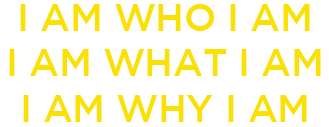02 May Present-passed and True-present
The past is the past and what we perceive as the present is also the past. We consciously experience the present as “present-passed,” not the “true-present.” The true-present is the universe, waves of seemingly chaotic energy in an otherwise empty space. The true-present is the pre-sent, the universe before we consciously experience it. The conscious experience of the past (the past and present-passed) is our perception of the universe as reflections from our mind.
The mind is a mnemonic device (etymology of mind: memory). Memories are illusions, stories we’ve created.
The two constants in the universe are change and interdependence. Thus, the true-present cannot be described beyond saying that it is what it is whatever it is. Like God’s response when Moses asks who God is: “I am who I am.” Like the Tao, it is nameless.
We experience the true-present when we are in the gap between true-present and present-passed. This is the space of nothingness. It is like breathing. After we exhale we pause before inhaling. That pause is the space of nothingness. When in that space, we are set to experience the true-present as it unfolds.
The true-present unfolds as waves of light and sound energy; visually, like a kaleidoscope. It is overwhelming, like trying to drink water coming off a fire-hose.
The purpose of the mind is to organize the true-present so that it’s drinkable, not overwhelming.
Experiencing the true-present is akin to hallucinating. The etymology of the word hallucinate is to wander in the mind. In our everyday life, we experience the world as reflections from a point along the perimeter of the pond-mind. As is our habit, every day we go to the same point on the perimeter which results in us having a consistent perspective of the world. However, the mind often is turbulent (a function of our lacking integrity and other distractions) and its reflections distorted. When we calm the mind (through practices like meditation), we can leave its perimeter and wade into the pond, wander in the mind. It is here we can experience the true-present.
In experiencing the true-present, we realize that the reality we’ve heretofore experienced was not reality; just reflections, illusions. The true-present is curvilinear and rectilinear cosmic waves of images and sounds that overwhelming come upon us until we drown. Our drowning however results not in our personal demise; it’s the demise of the various identities we’ve created that define us, the various stories we’ve made up about who we are. It is here when we realize that the past was just an illusion; that we are truly one of the waves, one with everything; as we’ve always been from before our beginning.
Then, we fall down laughing as we realize the play of life and our roles in it are based on illusions. The play starts as a tragedy and ends as a farce when the true-present is revealed.

